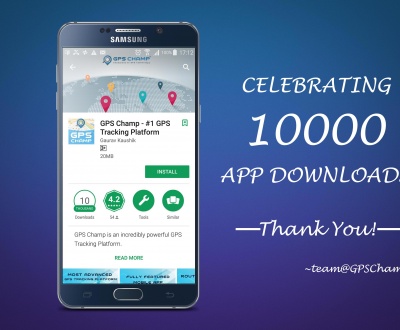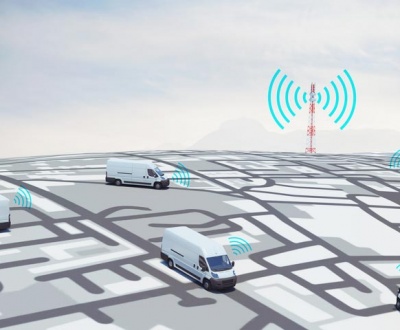What is GPS?
The term GPS means Global Positioning System (GPS) which is a satellite-based navigation system consisting of about 24 satellites that identify and locate precisely the exact position of an individual or any object on earth.
The GPS enabled satellites work in all weather conditions anywhere in the world, 24 hours a day, with no subscription fees or setup charges. The U.S. Department of Defense (USDOD) had initially launched a few satellites into earth orbit primarily for military use; they were made available for civilian use in the late 1980s. Currently there are 31 GPS satellites orbiting the earth with 3 satellites ready for launch when needed.
How GPS came into existence
In 1973, the idea of a Global Positioning System (GPS), initially named NAVSTAR, was developed by the United States Department of Defense (USDOD). As mentioned above, this technology was primarily for military use and was later made available for civilian use in the late 1980s. GPS technology owes its progress and advancement to three people who are acknowledged by the scientific community to have been clearly associated with the invention of this revolutionary technology.
Roger L. Easton, the former head of the Naval Research Laboratory’s Space Application Branch, was the brain behind various engineering applications and technologies that led to the development of the GPS. Another luminary in the development of the GPS was Ivan Getting, who was the founding president of the Aerospace Corporation in the USA. Getting was credited for enhancing the satellite system to enable precision data in the tracking and monitoring of moving objects on earth that range from vehicles to missiles. Another luminary in the GPS field is Bradford Parkinson, commonly referred to as the ‘The Father of GPS’; Bradford was the chief designer and implementer of the GPS in regard to its engineering evolution and development.
The Components of GPS
The Global Positioning System (GPS) consists of 3 sections, first of which are the earth orbiting satellites; second, the command, control and monitoring centers that are responsible for the techno-management of the GPS technology and the orbiting paths of the GPS satellites; and third, GPS receivers operated by individuals and industries.
How GPS Works
There are a total of 31 satellites revolving around the earth in their pre-determined orbits. At any given time on the planet, there are a minimum of 4 GPS satellites that are focused on a given geographic area on planet earth. Each GPS enabled satellite photographs and records stationery as well as moving objects and then transmits the data about the objects’ current position, speed of movement, and time of video-graph at regular time intervals. These GPS enabled satellites transmit the data signals to the GPS receptors on various handsets at the speed of light: the digitized data are detected by the GPS hand-set receiver and translated to visual images; the handset receptors calculates the orbiting satellite distance which is premised on the time interval of the received digital data, that is between data transmission and data reception. Once the handset receptors acquires all the information from the orbiting satellites focused on that particular geographical area, the GPS receiver can pinpoint the exact location of the earth based object/s which may be stationary or mobile using a process called Trilateration. The more the satellites that are focused on the given area, the more accurately the locations, images and speeds can be determined.
What is GPS Tracking
GPS tracking is the remote enabled surveillance/supervision of precise locations through the use of GPS technology in order to track and monitor the location and travel routes of one or more objects. GPS tracking is invaluable for police, firefighters, military and businesses that require constant supervision of moving objects such as vehicles, missiles and individuals. The GPS tracking systems normally use the Automatic Vehicle Locator (AVL) systems which employ a network of vehicles, each of which are installed with a portable radio receiver, a GPS receiver and a GPS antenna. Further, GPS technology employs interactive maps in place of static maps to determine the current situations of the roads and highways. GPS enabled smart phones and other portable devices are frequently used to live track and monitor targeted objects.
Commercialization of GPS
On May 25, 1989, the first commercial GPS trackers were launched into the consumer markets with the brand name and model no: Magellan GPS NAV 1000s. The hand held water proof device measured 8.75 x 3.5 x 2.25 inches in size, weighed 680 grams and looked like a large calculator with a rotating antenna arm attached. The device featured a multiline LCD display but had a comparatively low operational time of just a few hours. Just as was the case when the simple hand held calculators came with a high price tag at the time of their launch, the GPS handset retailed at USD $3,000 (approximately Rupees 54,000 at the time). In 1990,the celebrated car manufacturer, Mazda, launched its Eunos Cosmo model with a built-in GPS navigation system, the first car to come with the GPS tracking facility. Later in 1999, Benefon, a mobile phone manufacturer, launched the first commercially-available built-in GPS technology mobile phone. In the same year, Casio launched the first ever GPS wrist watch called the Casio GPS. Ever since, GPS technology rapidly became a household word with every smart phone and smart wristwatch boasting of GPS enabled technology.
GPS Champ offers incredibly Powerful Software along with thoroughly tested, Made In India GPS Tracking Devices. Visit http://www.gpschamp.com/ for more details.
Welcome to Our Blog!
We love to share the latest happenings of GPS Industry, Technology Advancements, Latest updates on our Devices & Software. If you find something interesting, don't forget to share it :)
Request a free quote
We offer advanced GPS Tracking Solutions that help businesses increase their ROI drastically in order to effectively managing their Assets.Â
Subscribe to our newsletter!
More from our blog
See all postsRecent Posts
- Celebrating 10000 GPSChamp App Downloads! December 25, 2018
- Your New Vacation Companion – GPS Safety Device December 5, 2018
- GPSChamp is now official supplier of GPS Trackers to CRPF December 3, 2018


















